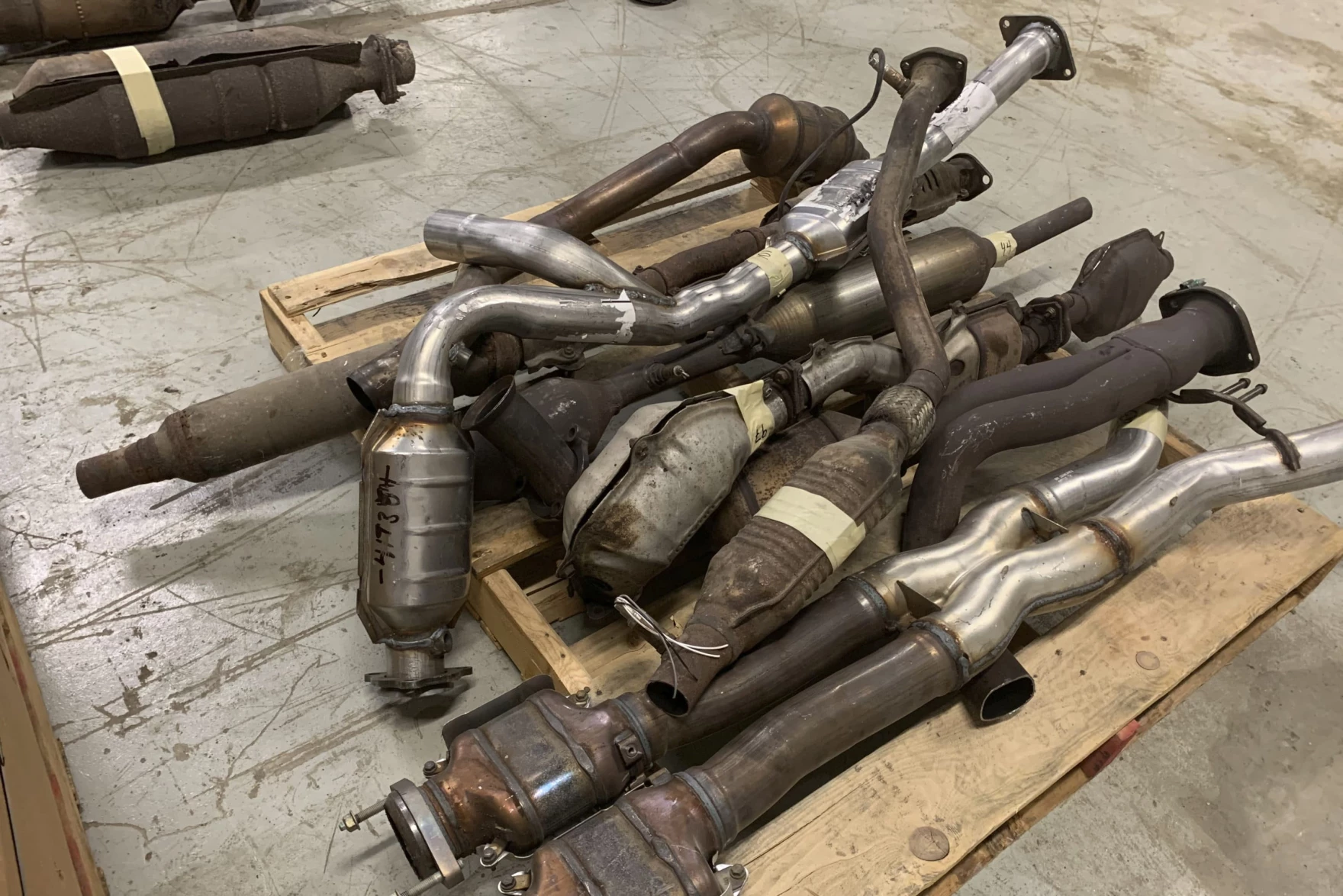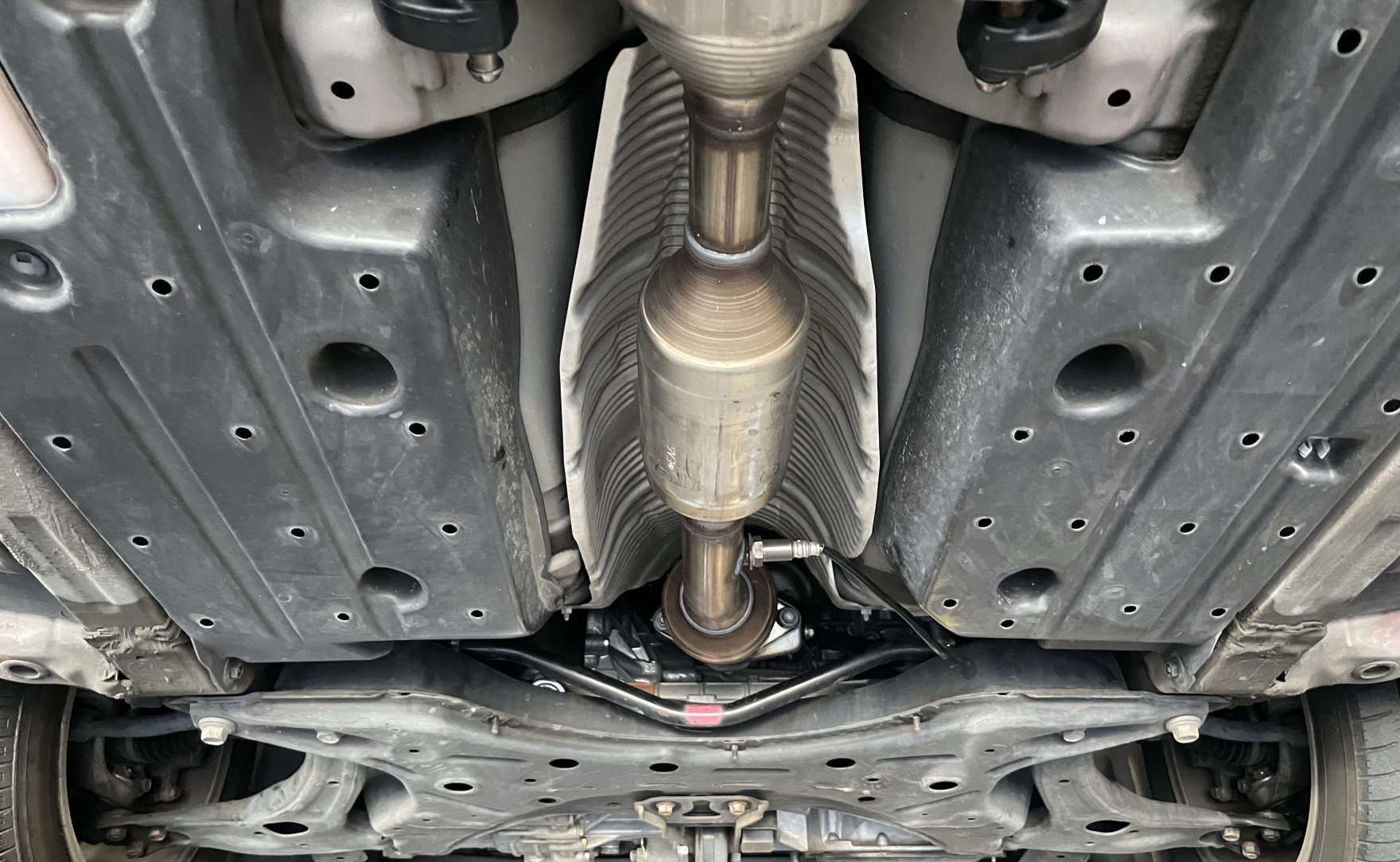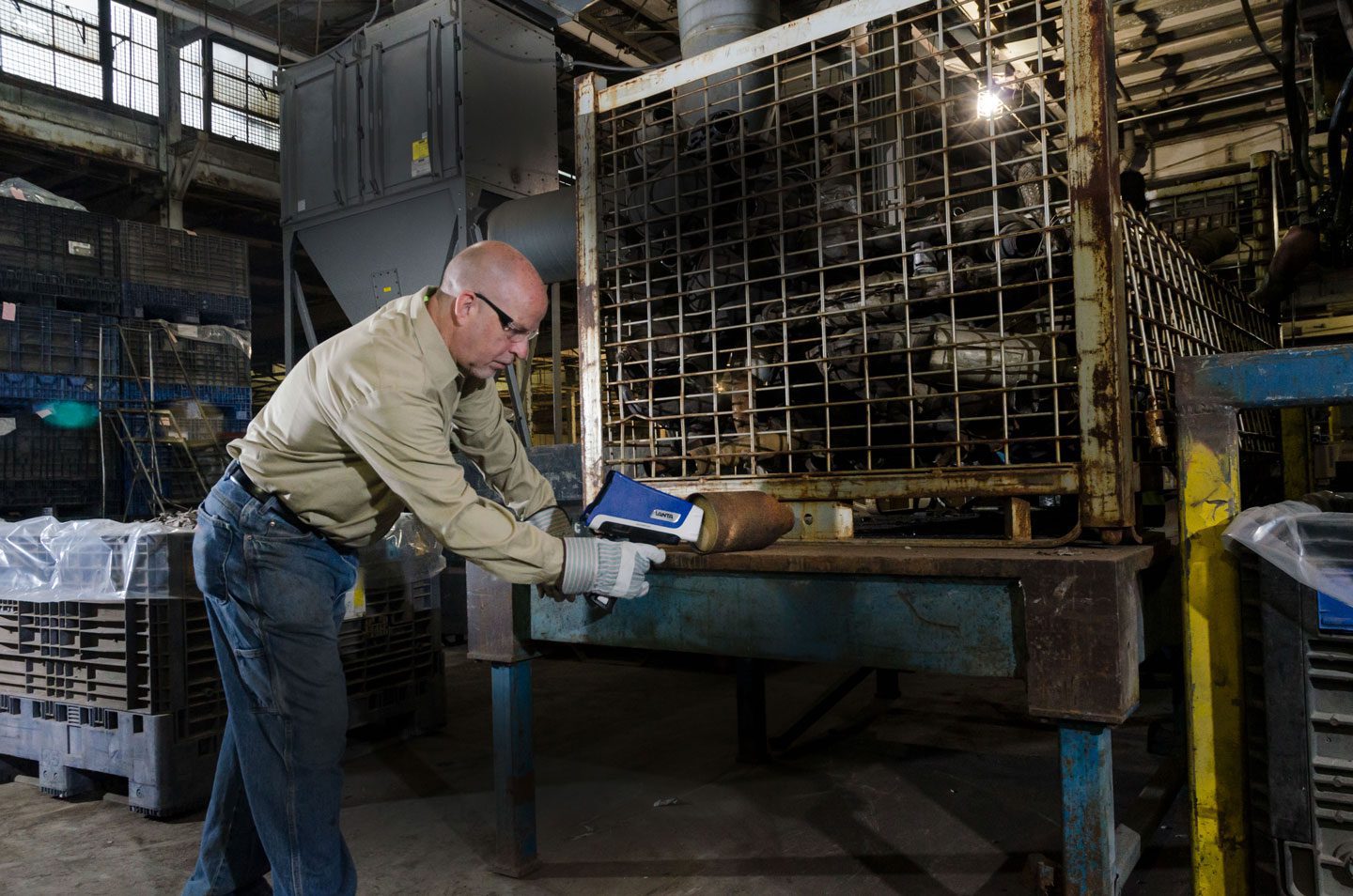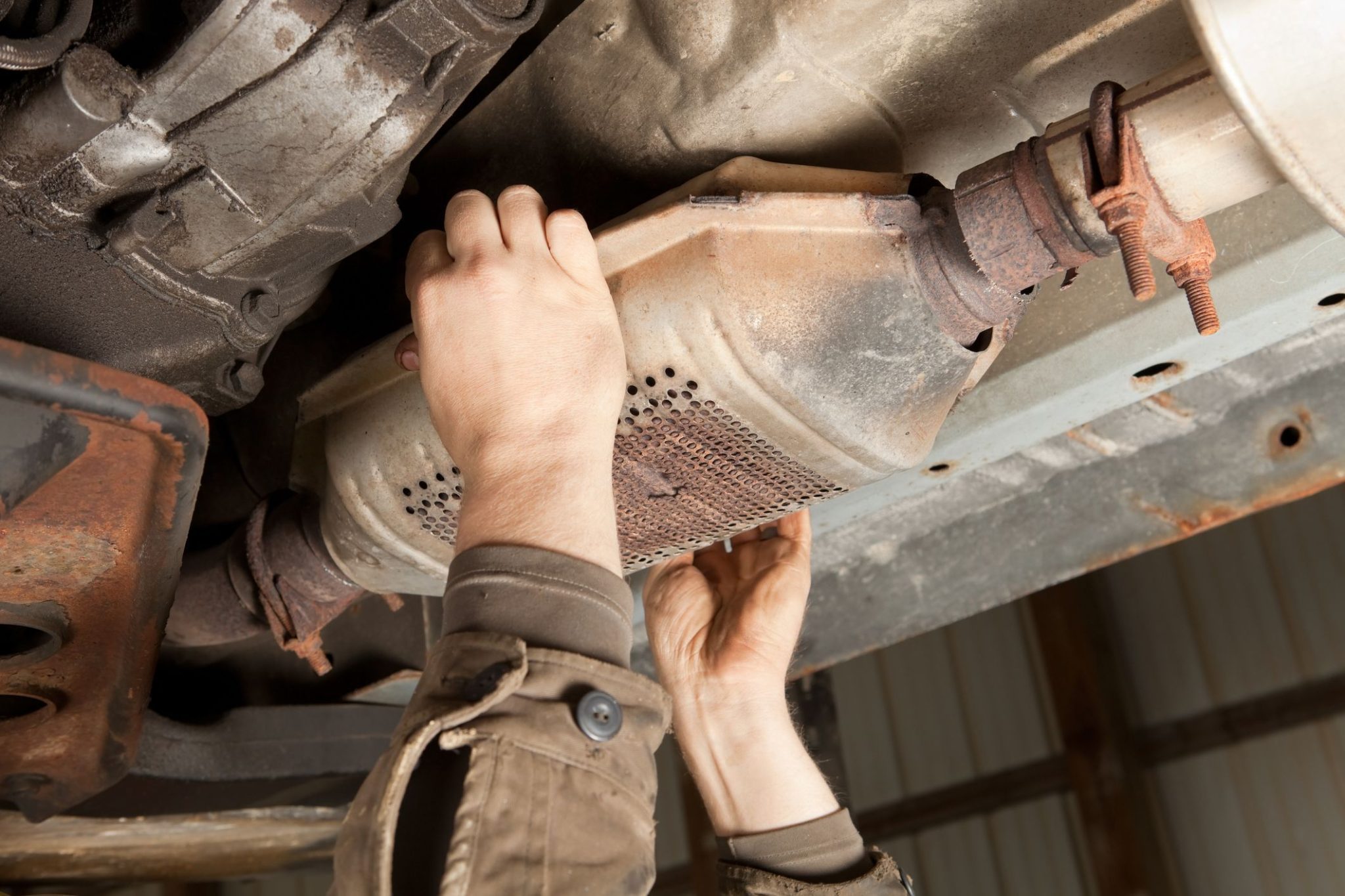Catalytic converter theft has emerged as a growing concern in recent years which has affected the entire consumer industry ranging from vehicle owners, to businesses, to communities across the globe.
These small, valuable components play an important role in controlling and reducing the amount of harmful emissions from vehicles but have become a target for theft due to the precious metals they contain (platinum, palladium, and rhodium).
It is an increasing threat for vehicle owners and today we dive deeper into this growing concern.
Function
A catalytic converter is a crucial component of a vehicle’s exhaust system designed to reduce harmful emissions produced during the combustion process in an internal combustion engine, typically found in gasoline and diesel-powered vehicles.
Credit: Times of San Diego
It works by converting harmful gases into less harmful substances before they are released into the atmosphere and is therefore a vital component as an emissions control device in reducing air pollution and improving air quality, minimizing the environmental impact that vehicles contribute to.
Catalytic converters (also commonly referred to as cats) come in different types such as ceramic, metallic, and Diesel Particulate Filter (DPF), each with its own advantages.
Ceramic
Inside the casing, there is a ceramic surface with honeycomb-like structures. You can see the internal structures by holding the part up to the light. Over time, these structures can become clogged, typically due to the use of low-quality fuel.
Advantages to using a ceramic catalytic converter can include:
- Cost-effectiveness as they are not expensive.
- Long part life as their their lifespan is around 100,000 km.
- Efficient performance.
However, these materials are vulnerable to external impacts and water.
Metallic Type Car Converters
Metallic cat converters are favored for their long-term usability. Such parts have a higher cost compared to other types due to the more complex technologies used in their manufacturing.
Advantages include:
- Resilience to external impacts as metallic automotive catalysts can withstand high loads and temperature variations, making them commonly used in high-power vehicles.
- Longer service life compared to other catalytic converters.
- Resistance to moisture.
This material is the most durable and is constructed in a spiral-shaped structure that can endure impacts.
Diesel Particulate Filter (DPF)
Diesel engines require specific catalytic converters due to their design. Exhaust gases are cleansed using a set of diesel particulate filters.
In this case, toxic emissions are mitigated but not to the extent that other converters can achieve. The particulate-type catalytic converter is represented by a filter consisting of several square blocks.
Parts are easily found and quick to replace, yet still have the advantage of reducing emissions where possible.
DPFs can be either closed or open, and their movement occurs in a chessboard pattern. It is essential to periodically clean such a filter, otherwise, power loss may occur. This is the most budget-friendly catalytic converter option, although it is easily susceptible to mechanical damage.
Rising Incidents of Catalytic Converter Theft
Credit: CarPro
According to Allstate Canada, data shows insurance claims submitted for catalytic converter thefts increased by 1710% between 2018-2022.
As mentioned, palladium, platinum, and rhodium are all precious metals found inside these parts. These metals can be sold to scrapyards for quick profit and over the years, thieves can become increasingly efficient at stealing them in a short amount of time.
Even in 2023, catalytic converter theft continues to soar throughout Canada.
In the USA, these thefts occur most frequently in 5 states:
- California
- Texas
- Pennsylvania
- Illinois
- Washington.
The amount of precious metals inside can differ between catalytic converters. Many modern vehicles have 6 grams or less of all 3 metals combined so their value can range as little as $200 to $1000 or more. It’s easy to see why these parts have become a top target for thieves looking to turn a quick buck.
Gasoline/Diesel Vehicles
Catalytic converter theft is nothing new, and vehicles that experienced the highest rates of catalytic converter theft include:
- Ford F-series
- Honda Accord
- Toyota Prius
- Honda CR-V
- Ford Explorer
- Chevrolet Silverado
- Toyota Tacoma
Trucks and SUV’s have high ground clearance which makes them even easier for thieves to get under.
Hybrid and EV
As of late, hybrid vehicles have become a target of catalytic converter theft and are particularly desirable as the converters themselves see less corrosion and as a result, the rare metals inside are worth more compared to diesel and petrol counterparts.
Thankfully, EV vehicles do not employ catalytic converters and have thus far been save from the eyes of unscrupulous thieves.
Recycling and Sustainability
Credit: Olympus IMS
Aside from the growing trend of cat converter theft, recycling catalytic converters is a common practice practice that helps recover valuable precious metals while reducing the need for mining new resources. This process involves dismantling the converters and extracting the precious metals (also known as catalysts).
Vendors such as AutoCatalystMarket, help find buyers for used catalysts that are no longer needed so they can be purified and repurposed in the production of new catalytic converters.
This business model can help reduce the illegal trade of stolen converters and also promotes resource conservation and sustainability in the automotive industry.
Innovations in Anti-Theft Technology
So you’ve got a gasoline or hybrid vehicle and have heard about catalytic converter theft in your area, or you simply want to be prudent and protect your vehicle. Vehicle owners can take proactive steps to prevent catalytic converter theft.
While there’s no theft-proof catalytic converter, you can make it more difficult for thieves. Security devices like converter shields and locking mechanisms are available as aftermarket products.
Credit: Car and Driver
There are other innovative solutions such as the etching of VIN codes on the parts, but these have largely been shown to be ineffective or ignored when stolen parts are brought to the scrapyard. However, there have been legislative bills in both Canada and the US to force scrap metal sellers to report certain types of transactions in an effort to make it more difficult to sell stolen goods.
Making it a habit to park in well-lit areas, secure parking facilities, and security cameras can also reduce the risk of theft.
It’s Not Going Away
Unfortunately, catalytic converter theft is a multifaceted problem and there is no easy solution.
The incentive for thieves to steal these parts increases as the price of precious metals continue to go up. It’s a sinister issue that results in financial loss for vehicle owners worldwide.
Addressing this issue requires a collaborative effort involving vehicle owners, law enforcement, businesses, and government authorities.
By implementing security measures, enforcing regulations, raising awareness, and exploring technological solutions, we can hopefully mitigate this issue. With the increasing availability of electric vehicles, there is hope that catalytic converter theft will be less common.















